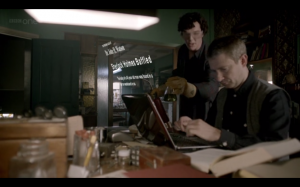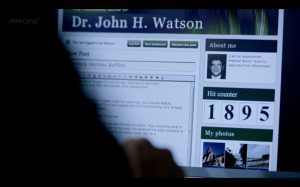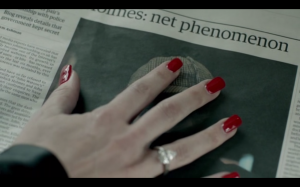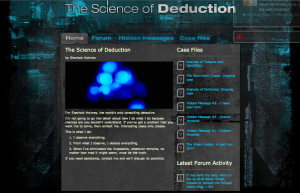 Here’s my favourite recent integrated transmedia production. I put this one together for a talk for the Transmédia Journées Festival in Montreal and I’m still a little OCD about following the Sherlock Twitter streams. And heads up! there are small spoilers here though I’ve avoided the biggies. If you don’t want to know anything, DON’T READ!
Here’s my favourite recent integrated transmedia production. I put this one together for a talk for the Transmédia Journées Festival in Montreal and I’m still a little OCD about following the Sherlock Twitter streams. And heads up! there are small spoilers here though I’ve avoided the biggies. If you don’t want to know anything, DON’T READ!
What I really like about the BBC’s approach to creating transmedia content for Sherlock was that the show’s producers kept everything super simple and everything they created was worked back into the show as important story points. The efficacy, unity and coherence across platforms is likely helped by the fact that Steven Moffat is co-creator, an executive producer, and co-writer, with Mark Gatiss.
Having chosen to make the Sherlock series a contemporary reworking of Conan Doyle’s original stories, it makes perfect sense that the characters blog, and that they’re active, no – hyper-active on Twitter. This decision then supports all kinds of cross-referencing between the blogs and blog content during the episodes.
That Watson blogs is mentioned in the first episode of Season One, when Sherlock states that he looked at it before meeting with Watson. Then as the episodes progress, Watson posts his accounts of Holmes’ cases through his blog, cross-linking to Holmes’ blog, The Science of Deduction and Holmes’ cross-links back, referring those who are interested in his cases to read Watson’s posts.
Watson’s blog also pushes fans quite directly to help solve the cryptic puzzles Holmes is posting on his site:
The blog hosts further exchanges between Watson and Holmes, reinforcing their characterrs, as in this exchange after Watson posts his first case study, A Study in Pink:
Moffat and Gatiss also use Watson’s blog to return to key moments within the TV episodes, as in the final confrontation with Moriarty in The Great Game, where the reader re-experiences the moment in which Watson is very close to death in multiple ways from his pov.
Season 2 then ramps up the integration of Watson’s digital life into the show and during episodes we see him writing his blog,
Holmes irritated at the sky-rocketing number of views Watson’s blog is getting,
and headlines on Holmes’ becoming a “Net Phenomenon” because of the attention Watson’s blog and case studies are generating.
Holmes posts key documents onto his blog, The Science of Deduction, that connect back significantly to mysteries in given episodes. (I’m not going to spoil it! You will find it 🙂
The production then nicely breaks the fourth wall when Watson’s blog is then ‘hacked’ and a video filmed by someone breaking into their apartment is posted via his blog (again, I’m not giving this one away).
And ditto with the inclusion of a BBC video reporting on the climactic ending of Season Two, again, cross-posted to Watson’s blog,
And as Season Two ends with the mystery of Holmes’ fate and character, and Watson’s declaration that ‘I’ll always believe in him,’ fans across the globe take up the invitation and begin posting affirmations of their faith as well.imageimageimage
This is a smattering of the transmedia content developed for and generated by the BBC’s Sherlock. What’s really fab is that you can see how the show’s producers have started a movement that lives on after the end of Season Two, in a community that continues to engage with and create content around the show, waiting for Season Three. Genius.
Part Two will dip into other social media content developed around the show and there is a lot of it!












